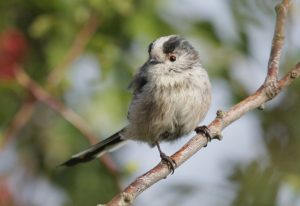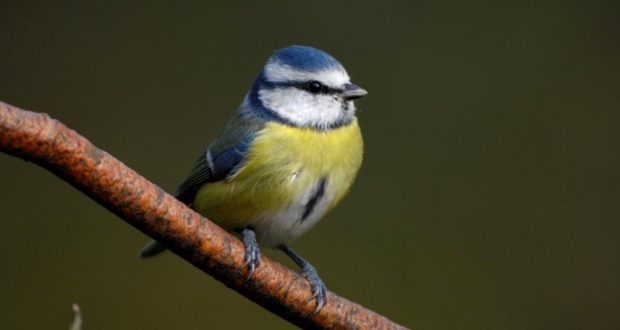by Dr Chris Andrews
Visitor experience manager, RSPB Frampton March
This time I’d like to talk about tits. Oh dear, I can hear the sniggering already.
Yes, there is a whole family of birds called tits. The name ‘tit’ means ‘small’, as in the word ‘titbit’ for a small morsel of food.
So what do they look like? Well, basically small, cute, fluffy and with a short pointy bill. They are generally acrobatic birds, who live up in the trees searching for grubs and caterpillars in the summer, berries and seed in the winter.
In the UK we have eight different birds with the name. Though only four are likely to be visitors to Spalding gardens.
We’ll start with blue tits. The main colour of which is…yellow. But yes, also blue on their head, wings and tail. The belly is yellow (quite appropriate!), the face is white. Often people’s favourite garden bird, and well known for stealing the cream from out of milk bottles.
Larger than the blue tit is the great tit. Also a yellowbelly, but in their case with a big black strip down the middle. The head is white, with black cheeks.
The coal tit is the same size as the blue tit, but much less colourful. It is a grey colour. The head is black, with white cheeks like the great tit, but also a white strip running down the back of the head.

Long-tailed tit (photo: Ray Kennedy, rspb-images.com)
Finally there is the long-tailed tit. They are pink, white and black, with a tail that is longer than their body.
At this time of year lots of tits band together to form roving flocks. More eyes to look for food or predators. So keep your eyes peeled for these charming little birds as they move through gardens, hedgerows or anywhere with a mix of trees and bushes.
Just maybe choose your words carefully if anyone asks you what you are looking at!
 The Voice of Spalding and South Holland
The Voice of Spalding and South Holland


